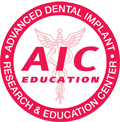Most dentists practicing implant dentistry have been there: They have spent countless hours and money sitting in weekend CE courses learning about the ideal position and angulation of implant placement. So now, it’s not about whether they know what a good implant placement is anymore. The question now is, “Am I going to be able to place the implant in that ideal position?” EDI Journal talked about this topic to Dr David Chong, an experienced practitioner and user of digitally guided surgery for implant placement.
Where do you see the advantages of digital guided surgery compared to conventional surgery?
I think the main advantages of digitally guided surgery include “safety” – which reduces the incidence of complications, “high efficiency” – which reduces operative time and patient’s discomfort, “minimal invasiveness” – which allows a flapless approach that can minimize postoperative swelling and pain, and finally “aesthetics” – which is achieved with proper implant position in three dimensions.
What would be the barriers which make dentists reluctant to use this new technology?
I believe that the reasons for resistance to guided surgery among dentists are initial start-up cost, more time needed to plan the surgery, and the complexity involved with the planning. It is difficult to pass the additional cost that is incurred to the practice onto the patients. It definitely takes longer time to plan for guided surgeries than to plan for conventional surgeries. In addition, guided surgery planning appears to be daunting in the beginning especially if the clinician is not friendly with computer-related technologies. But once clinicians get into it and see how simple it is, they start to love the technology.
What would be the preconditions to fully benefit from digitally guided surgery?
In order to fully benefit from digitally guides surgery, one needs to decrease or eliminate errors. Errors can be categorized into pre-surgical errors that happen during the planning phase and errors that occur during the surgery. The pre-surgical errors can commonly occur during data acquisition, processing, merging, and guide printing phase. Intra-operatively, some of the common errors that occur are surgical guide mis-positioning, movement during drilling, and movement during the actual implant insertion.
Operator experience is also a critical factor because even digitally guided surgery has learning curves. By eliminating these errors, clinicians can fully benefit
from digitally guided surgery.
You are a long-term user of Osstem’s OneGuide System. To whom of your colleagues would you recommend this system?
My friend and mentor Dr Yongjin Kim introduced me to the One Guide system. I was lucky enough to attend the advisory meetings for research & development of the system in Seoul, Korea. At the end, I was very convinced to try the system. And after I started to incorporate this technology into my practice, I was
convinced that this technology is for all, not just a subgroup of clinicians. When the cases are properly selected, this technology will benefit all clinicians.
How do you see the future of digitally guided surgery?
The exponential evolution of CAD/CAM technology makes for a wonderful future for digitally guided surgery. The technology is ever-changing with increased precision and faster turnaround time. Numerous software options allow for more accurate integration between surgical and prosthetic plans. These advancements in technology will allow practitioners to deliver more customized options to patients in many different levels during treatment phases. These custom designs and custom parts will personalize the procedure for each individual. It is this customization that will benefit our patients the most. Tailored technology to each individual patient is the future of the dentistry and it is available to us now. The future is here.
Thank you for the interesting interview, Dr Chong.

